Archaeologists have removed the lid of a sealed ancient Roman sarcophagus, finding preserved remains of a young woman who died 1,700 years ago.
The team with the Budapest History Museum discovered the limestone coffin during a large-scale excavation in Óbuda, a northern district of the city that once formed part of Aquincum, a bustling Roman settlement on the Danube frontier.
Untouched by looters and sealed for centuries, the sarcophagus was found with its stone lid still fixed in place, secured by metal clamps and molten lead.
When researchers carefully lifted the lid, they uncovered a complete skeleton surrounded by dozens of artifacts, offering a rare glimpse into Roman life on the Danube frontier.
The funerary goods included two completely intact glass vessels, bronze figures and 140 coins.
Archaeologists also found a bone hairpin, a piece of amber jewelry and traces of gold-threaded fabric. They said the size of the skeleton pointed to a young girl.
The sarcophagus and its contents ‘definitely make it stand out,’ said Gergely Kostyál, a Roman-period specialist and coleader of the project.
‘This probably means that the deceased was well-to-do or of a higher social status.’
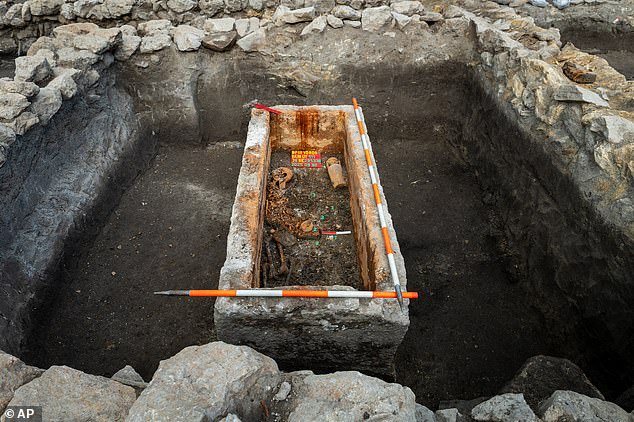
Archaeologists opened the sealed coffin to find the remains of a young woman who has not been disturbed for 1,700 years
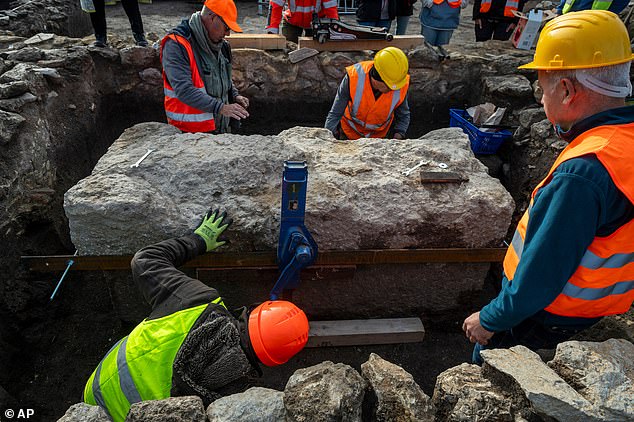
The team with the Budapest History Museum discovered the limestone coffin during a large-scale excavation in Óbuda,
‘It is truly rare to find a sarcophagus like this, untouched and never used before, because in the fourth century it was common to reuse earlier sarcophagi,’ he added.
‘It is quite clear that this sarcophagus was made specifically for the deceased.’
Anthropologists will now examine the young woman’s remains, a process expected to reveal more about her age, health and origins.
But even now, the grave’s placement and abundance of artifacts offer strong clues.
The coffin lay among the ruins of abandoned houses in a quarter of Aquincum vacated in the 3rd century and later repurposed as a burial ground.
Nearby, researchers uncovered a Roman aqueduct and eight simpler graves, but none approaching the richness or pristine condition of the sealed tomb.
Excavators also removed a layer of mud roughly 1.5 inches thick from inside the coffin that Fényes hopes could contain more treasures.
‘I suspect we could find jewelry. We haven’t found any earrings or other jewelry belonging to the woman, so I hope that these small items will turn up during the sifting of the mud,’ Fényes said.
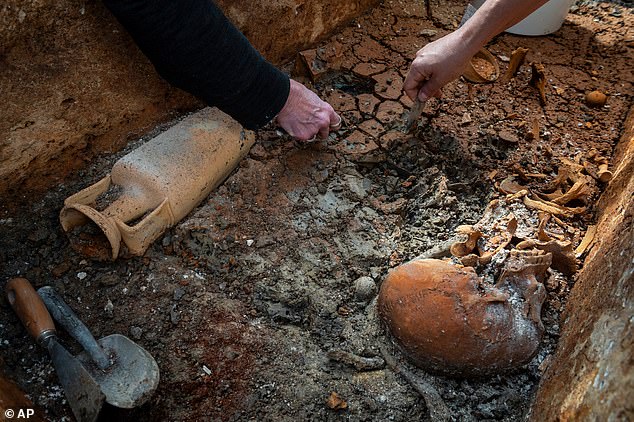
When researchers carefully lifted the lid, they uncovered a complete skeleton surrounded by dozens of artifacts, offering a rare glimpse into Roman life on the Danube frontier
For Fényes, the discovery of the Roman sarcophagus is not only of scientific significance but an emotionally resonant insight into the devotion displayed by people in ancient times.
‘I was very touched by the care and expression of love that we were able to get a glimpse of,’ she said.
‘Even now, I shudder to think how painful it must have been for the people at that time to bury this young lady.’
The Danube River served as a critical frontier for the Roman Empire, marking the edge of its northern territories.
Starting in the 1st century BCE, Rome established military camps and settlements along the river to secure its borders against Germanic and Dacian tribes.
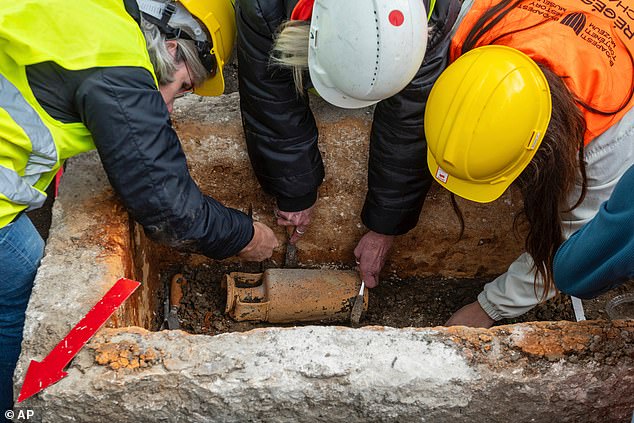
Archaeologists also found a bone hairpin, a piece of amber jewelry and traces of gold-threaded fabric. They said the size of the skeleton pointed to a young girl
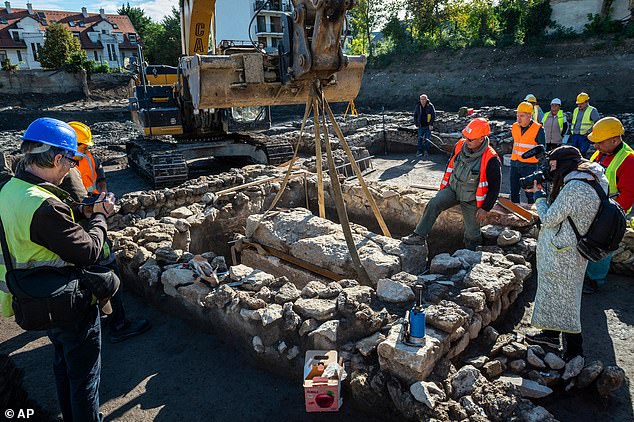
Anthropologists will now examine the young woman’s remains, a process expected to reveal more about her age, health and origins
The city of Aquincum, now part of modern Budapest, became a major Roman outpost and administrative center, featuring forts, baths and public buildings.
Roman legions stationed along the Danube built roads, bridges, and fortifications that allowed for trade, military mobility, and cultural exchange.
Aquincum also became a hub for civilian life, attracting merchants, artisans, and families who lived alongside soldiers.
Archaeological finds from the region reveal a vibrant community with mosaics, pottery, coins, and inscriptions that highlight both Roman influence and local traditions.
The strategic location along the river allowed Rome to project power into Central Europe while fostering economic growth and cultural blending.
Even after the empire’s decline in the 4th and 5th centuries CE, the remnants of these settlements continued to shape the region’s history, leaving behind a rich legacy of Roman architecture and daily life that still captivates archaeologists today.

